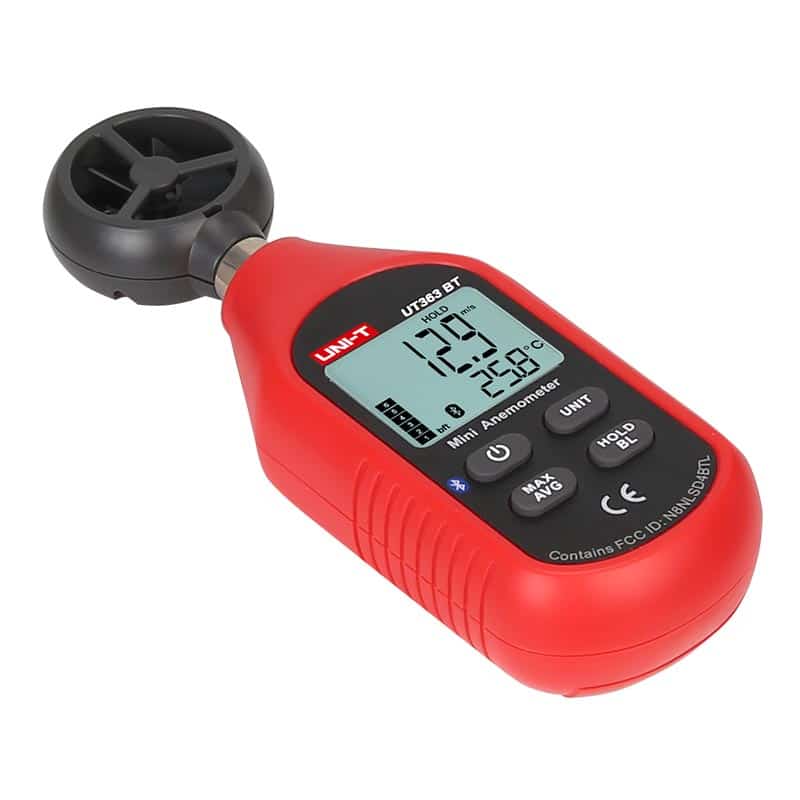How an Anemometer Can Improve Your Weather Surveillance System
Wiki Article
Exploring the Features and Advantages of Anemometers for Weather Condition Enthusiasts and Specialists
From cup anemometers to sonic anemometers, each type brings its one-of-a-kind collection of applications and advantages, shedding light on different facets of atmospheric conditions. As we dive right into the features and benefits of anemometers, a deeper understanding arises not only of dominating weather condition sensations yet additionally of the more comprehensive effects for markets like wind energy manufacturing and ecological research.Value of Anemometers in Climate Surveillance
Anemometers play a vital role in weather condition tracking by providing precise dimensions of wind speed, helping in projecting and understanding climate patterns. These tools, varying from conventional mug anemometers to modern ultrasonic anemometers, are important for meteorologists, researchers, and climate fanatics alike. By determining wind rate, anemometers aid in figuring out the strength of weather sensations such as hurricanes, tornados, and hurricanes. In addition, they supply beneficial information for air travel, maritime operations, and various markets that are sensitive to wind problems.
Types of Anemometers and Their Applications
The most typical kinds of anemometers consist of cup anemometers, vane anemometers, hot-wire anemometers, and ultrasonic anemometers. Mug anemometers are composed of 3 or 4 mugs mounted on horizontal arms that revolve with the wind, measuring its speed. Vane anemometers, on the other hand, utilize an openly revolving vane to line up with the wind direction, offering both wind rate and instructions measurements.Each sort of anemometer has its special advantages and applications. Cup anemometers are durable and appropriate for basic weather condition tracking, while vane anemometers are preferred for directional measurements. Hot-wire anemometers are delicate to low air speeds, making them optimal for indoor settings. Ultrasonic anemometers are non-intrusive and provide high accuracy, commonly made use of in research study and specialized weather condition tracking applications. Recognizing the qualities and applications of each kind of anemometer is essential for choosing one of the most proper instrument for certain weather keeping an eye on requirements.
Benefits of Using Anemometers in Forecasting
In weather forecasting, the application of anemometers provides indispensable advantages for boosting the precision of climate projecting. Anemometers gauge wind rate and direction, giving critical data for forecasting weather patterns. By including wind data right into forecasting versions, meteorologists can much better comprehend the activity of climate systems, anticipate modifications in weather, and issue extra specific projections.
In addition, anemometers play an essential role in evaluating potential weather condition hazards. Checking wind rates helps forecasters anticipate serious climate occasions such as storms, hurricanes, and winter season tornados with greater precision. This early warning system makes it possible for authorities to read here issue timely signals and execute needed precaution, reducing the dangers to life and property.
official site
Additionally, anemometers help in enhancing renewable resource production. By evaluating wind patterns, meteorologists can recognize appropriate areas for wind ranches and predict power result, contributing to the effective generation of wind power.

Anemometers in Wind Power Production
Provided the vital role anemometers play in offering precise wind data for weather projecting and hazard analysis, their significance includes the realm of wind power production. Anemometers are important instruments in the field of wind energy, where the measurement of wind rate and instructions is important for figuring out the usefulness and efficiency of wind turbine installations. By precisely gauging wind rates at differing heights, anemometers aid enhance the positioning and layout of wind turbines to make the most of energy outcome.In wind farms, anemometers are strategically placed to accumulate real-time wind information that is made use of to examine the potential energy production of a site. This information is critical in establishing the economic viability of wind power jobs and in projecting power generation to ensure grid security. In addition, anemometers aid in keeping track of wind conditions to optimize wind turbine performance, avoid damages from high winds, and guarantee the safety of workers operating in the vicinity of wind turbines.
Enhancing Weather Recognizing With Anemometers

Anemometers play a vital role in improving our understanding of microclimates. his explanation These localized climate condition can differ dramatically from broader local projections, making it crucial to have precise data for particular locations. anemometer. By strategically placing anemometers in different areas, scientists can collect comprehensive details on exactly how wind behaves in various terrains, metropolitan settings, or bodies of water
Moreover, anemometers add to improving climate forecasting versions by offering real-time data on wind behavior. This info is particularly useful for forecasting extreme weather events, optimizing agricultural practices, and sustaining sectors like aviation and maritime navigation. On the whole, anemometers are very useful tools that enable us to delve deeper right into the intricacies of weather systems, ultimately resulting in more better-informed decisions and accurate predictions.
Conclusion
In conclusion, anemometers play a critical function in weather condition surveillance and projecting by determining wind speed and direction. Anemometers likewise have applications in wind energy manufacturing, further highlighting their significance in both weather forecasting and sustainable power markets.From mug anemometers to sonic anemometers, each type brings its special collection of advantages and applications, shedding light on different aspects of atmospheric conditions. These tools, ranging from traditional mug anemometers to contemporary ultrasonic anemometers, are vital for meteorologists, scientists, and weather condition enthusiasts alike. The most usual kinds of anemometers consist of cup anemometers, vane anemometers, hot-wire anemometers, and ultrasonic anemometers. Mug anemometers are appropriate and durable for general weather condition monitoring, while vane anemometers are favored for directional measurements. Anemometers are essential instruments in the area of wind energy, where the measurement of wind speed and direction is vital for determining the expediency and performance of wind generator installations.
Report this wiki page